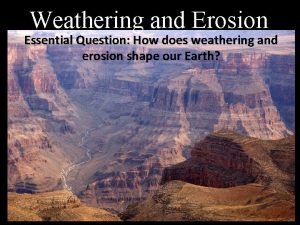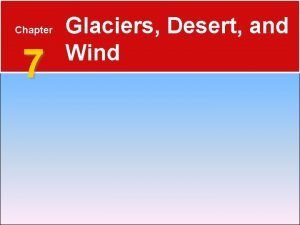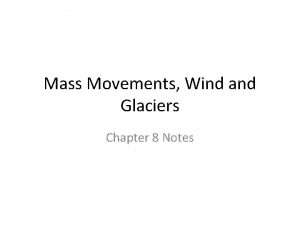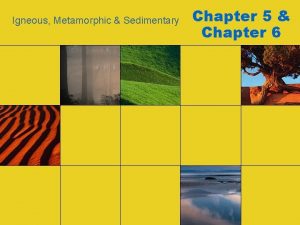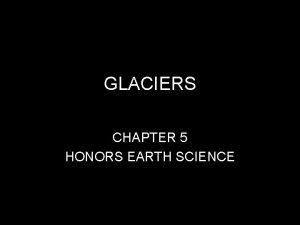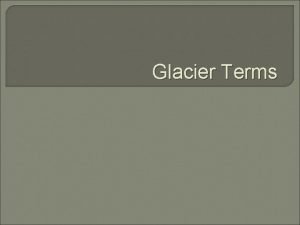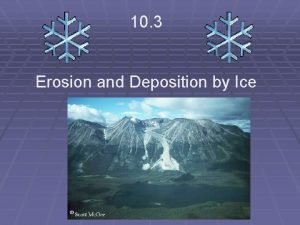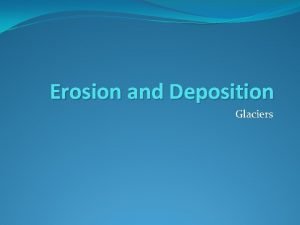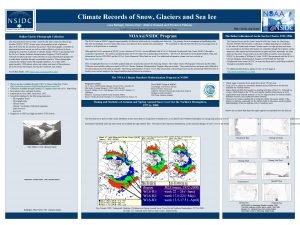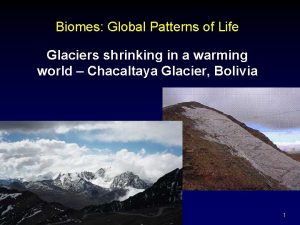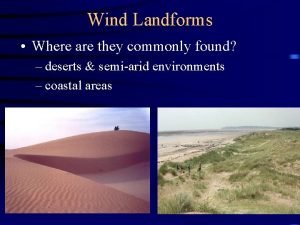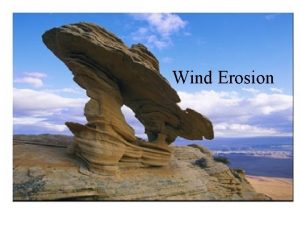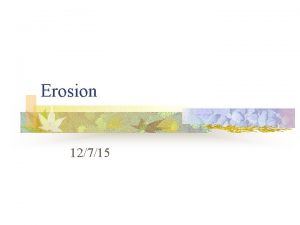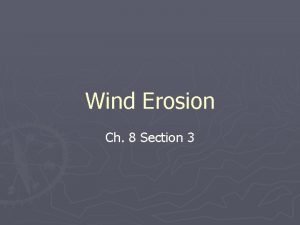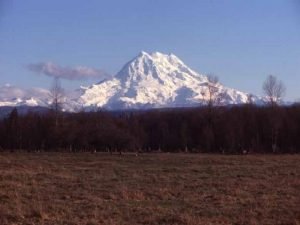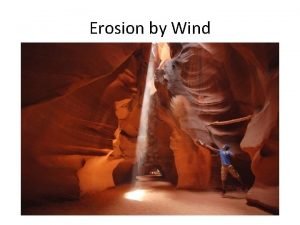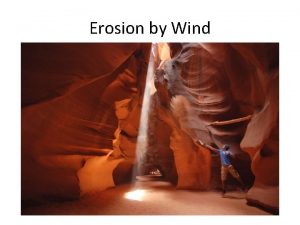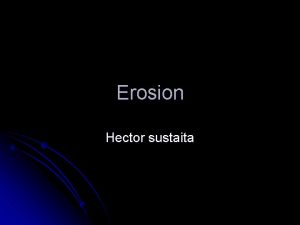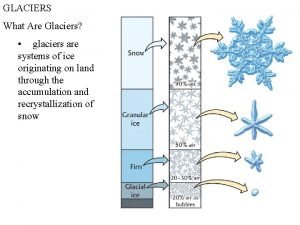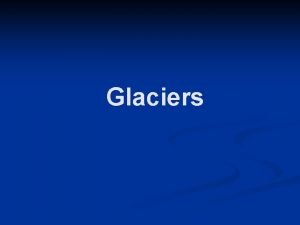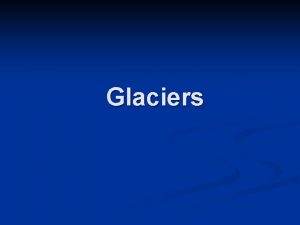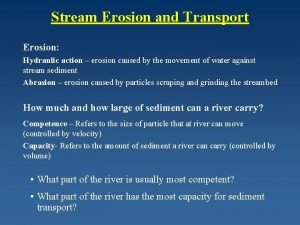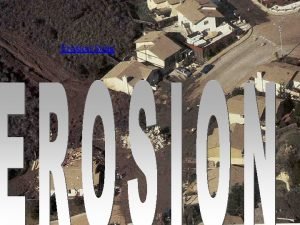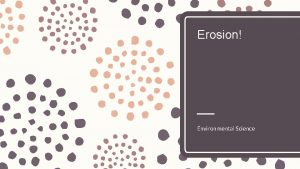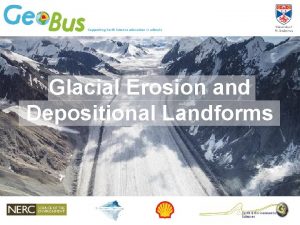WIND AND GLACIERS WIND WIND EROSION AND TRANSPORT















- Slides: 15

WIND AND GLACIERS

WIND

WIND EROSION AND TRANSPORT • Wind cant carry particles as large as those transported by water • Ability of wind to erode materials is less than that of other agents (i. e. water and ice) • Suspension: method of transport by which strong winds cause particles to stay airborne for long distances • Saltation: causes bouncing motion (sand transport)

WIND EROSION AND TRANSPORT • Occur where there is little precipitation and vegetative cover (like deserts) • Deflation: surface of land lowers from the wind’s removal of surface particles • Can be major problem in the agricultural areas • abrasion (process of erosion): particles rub against the surface of rocks or other materials • Wind abrasion very effective agent of erosion • Ventifacts: rocks shaped by wind-blown sediments


WIND DEPOSITION • Occurs in areas where there are changes in wind velocity • Dunes: form over time where sand particles accumulate due to some object (rock landform or piece of vegetation) blocking its forward movement • Certain conditions determine a dune’s shape: 1) Availability of sand 2) Wind velocity- determines height 3) Wind direction 4) Amount of vegetation present


TYPES OF DUNES • Barchans: solitary, crescent-shaped, form in flat areas with little sand or vegetation • Transverse: formed with plenty of sand, little vegetation, and strong winds • Parabolic: U-shaped, form between clumps of plants • Longitudinal: limited sand available, strong winds, parallel to wind direction

LOESS • Def: thick, wind blown silt deposits (another material wind also carries in great quantities and long distances) • Loess deposits located Illinois, Iowa, Missouri, South Dakota, Nebraska, Kansas, and Idaho. • With adequate precipitation, loess soils are some of the most fertile on Earth due to their abundance in minerals and nutrients

GLACIERS LARGE MOVING MASS OF ICE

MOVING MASSES OF ICE • Form near Earth’s poles and mountainous areas at high elevations • 10% of Earth’s surface • Valley Glaciers: glaciers form in valleys in high, mountainous areas; • Continental Glacier: glaciers that cover broad, continentsized areas; thickest at its center and much larger than valley glaciers

Valley Glacier Continental Glacier

GLACIAL EROSION • Most powerful erosional agent due to size, weight, & density. • Create U-shaped valleys (valley glaciers) and also scoop out deep depressions known as cirques Switzerland’s Matterhorn: formed where there were glaciers on three or more sides of this mountain top and this peak formed. (known as a horn)

GLACIAL DEPOSITION • Outwash: sediment from glaciers deposited from the melting glacier (meltwater) • Outwash plain: where the meltwater streams flow and deposit the outwash • Eskers: long, winding ridges of layered sediments that are deposited by streams flowing under a melting glacier • Kettle Lake: when ice block breaks off and covered by sediment, later ice block melts, leaving deep depression that then fills with precipitation forming the lake

Kettle Lake
 Glaciers cause erosion by abrasion and
Glaciers cause erosion by abrasion and Chapter 7 glaciers deserts and wind
Chapter 7 glaciers deserts and wind Chapter 8 mass movements wind and glaciers
Chapter 8 mass movements wind and glaciers Angular sedimentary rocks
Angular sedimentary rocks Difference between rill erosion and gully erosion
Difference between rill erosion and gully erosion Morraine glacier
Morraine glacier Arrowhead region mn
Arrowhead region mn U shaped valley
U shaped valley How can a glacier deposit both sorted and unsorted material
How can a glacier deposit both sorted and unsorted material Is a valley
Is a valley Nsidc glaciers
Nsidc glaciers Bolivia glaciers
Bolivia glaciers Abrasion wind erosion
Abrasion wind erosion Abrasion wind erosion
Abrasion wind erosion Wind erosion saltation
Wind erosion saltation Wind erosion
Wind erosion
